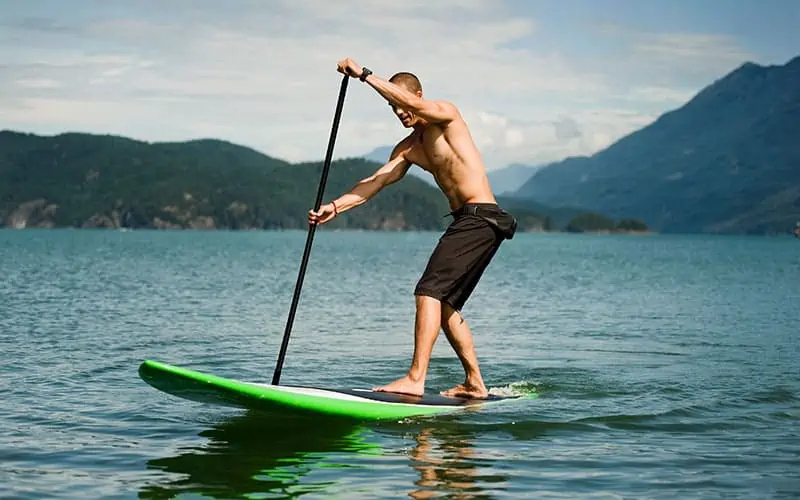
Paddle boarding is a fun and rewarding activity that can be enjoyed by people of all ages and skill levels. Whether you’re looking to explore the beauty of a serene lake or ride the waves of the ocean, paddle boarding is a versatile and accessible sport that provides a great workout while also allowing you to connect with nature. If you’re new to paddle boarding, there are some tips and tricks that can help you get started and make your experience more enjoyable. In this article, we’ll explore some of the best tips and tricks for paddle boarding beginners.
Take a Lesson
One of the best things you can do to get started with paddle boarding is to take a lesson from a qualified instructor. A lesson can help you learn proper technique and safety precautions, as well as provide valuable tips and advice for getting the most out of your paddle boarding experience. Many companies offer paddle board lessons, and it’s important to choose a reputable provider with experienced instructors.
Choose the Right Equipment
Selecting the right equipment is an important part of getting started with paddle boarding. The two main types of paddle boards are rigid and inflatable. Rigid boards are typically made from solid materials such as foam or fiberglass and are more durable and stable than inflatable boards. Inflatable boards, on the other hand, are made from high-strength PVC material and can be inflated and deflated for easy storage and transport.
When selecting a paddle board, consider your size, skill level, and the type of water you’ll be paddling on. If you’re a beginner, opt for a wider board with more stability. If you plan to paddle on calm lakes and rivers, an inflatable board may be a good option.
Dress Appropriately
When paddle boarding, it’s important to dress appropriately for the weather and water conditions. Wear a life jacket or personal flotation device, and consider wearing a wetsuit or other appropriate water gear if the water is cold. Sunscreen, sunglasses, and a hat are also important to protect your skin and eyes from the sun’s rays.
Learn Proper Technique
Proper technique is essential for safe and efficient paddle boarding. When standing on the board, keep your feet shoulder-width apart and your knees slightly bent to maintain balance. Hold the paddle with both hands, with your hands shoulder-width apart and your arms straight.
Start in Calm Water
When you’re first starting out with paddle boarding, it’s important to paddle in calm water. This will allow you to practice proper technique and gain confidence before venturing into more challenging conditions. Look for a calm lake or river with minimal current, and avoid areas with heavy boat traffic or strong winds.
Practice Good Etiquette
When paddle boarding, it’s important to practice good etiquette and respect other paddlers and water users. Follow local rules and regulations, avoid crowded areas, and be mindful of your impact on the environment. When passing other paddlers, give them plenty of space and avoid creating wakes that could tip them over.
Be Mindful of Conditions
As you gain experience with paddle boarding, you’ll learn to read the water and be mindful of conditions such as wind, waves, and currents. When paddling into the wind or against a current, use shorter, faster strokes to maintain momentum. When paddling with the wind or current, use longer, slower strokes to conserve energy. Always be aware of your surroundings and adjust your technique and speed as needed.
Conclusion
Paddle boarding is a fun and rewarding activity that can provide a great workout while also allowing you to connect with nature. With a little practice and patience, you can become a skilled and confident paddler and enjoy all the benefits that paddle boarding has to offer.

